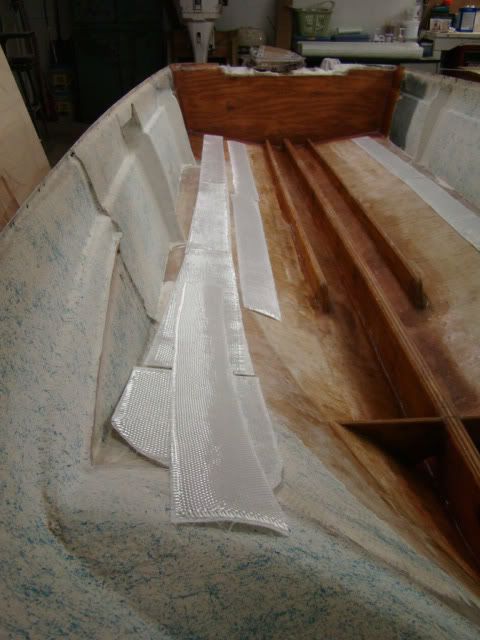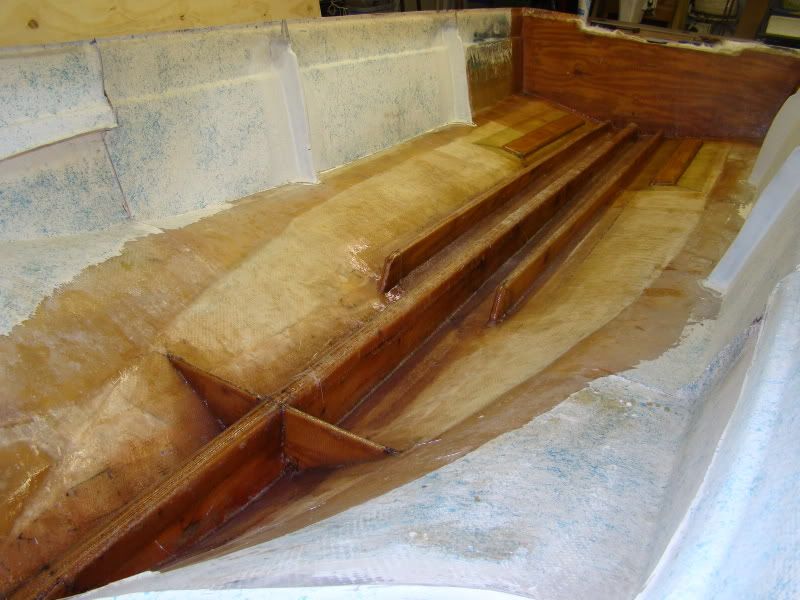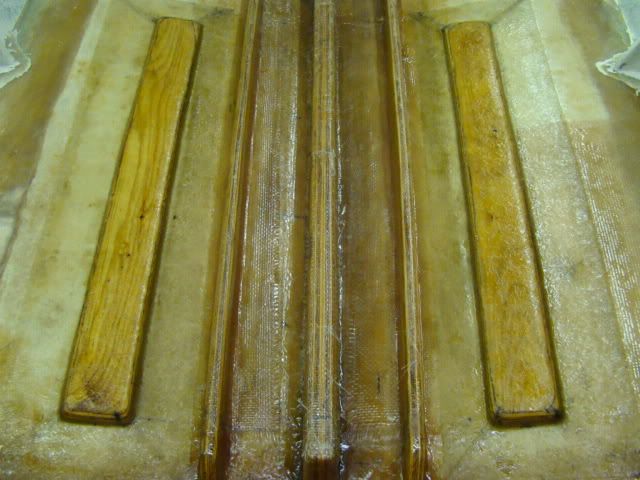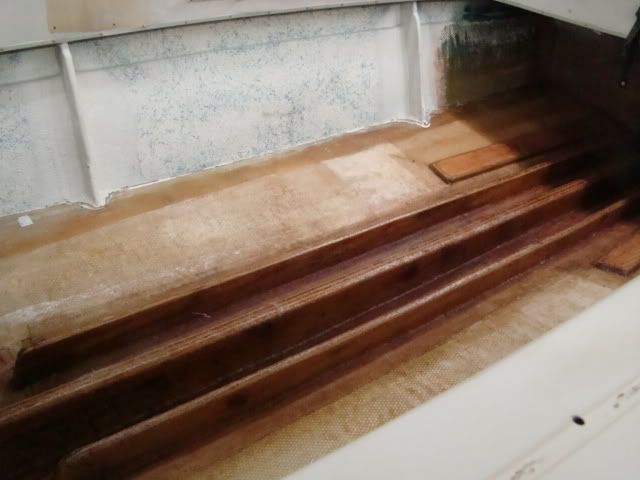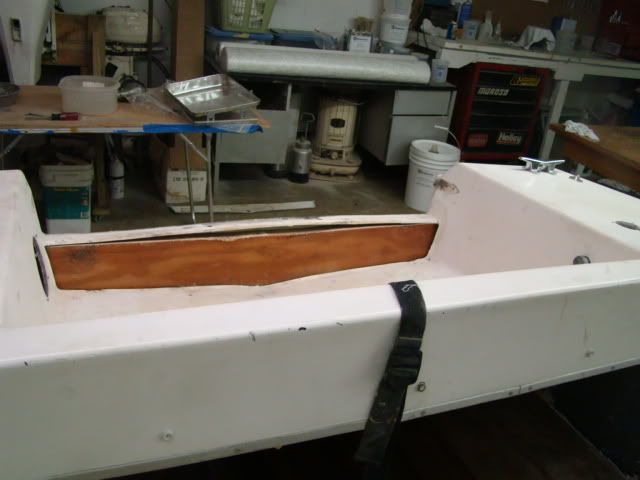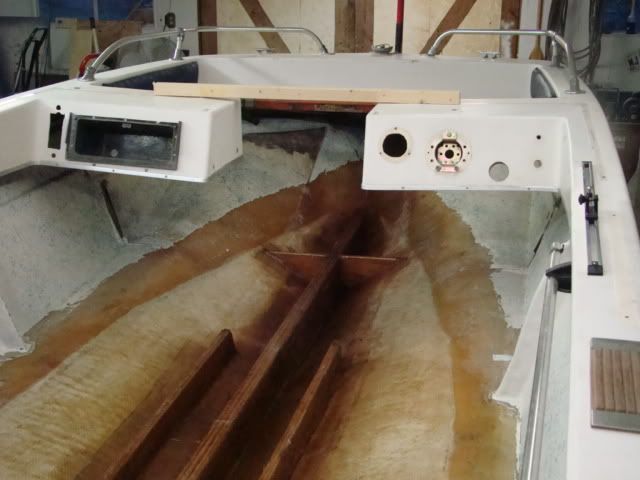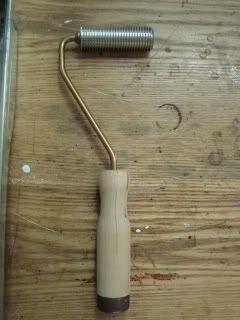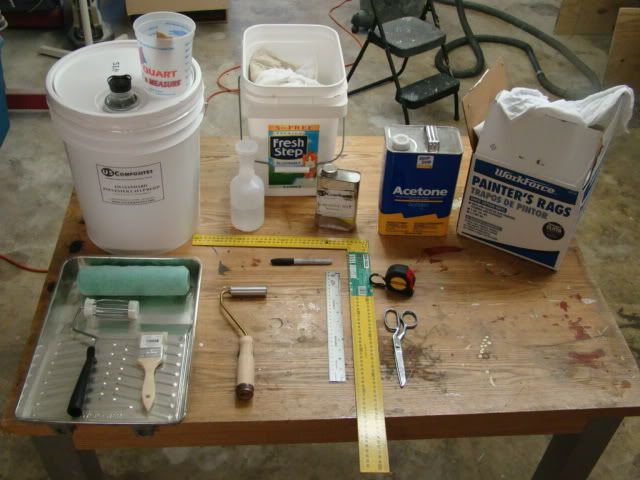drewpster
Commander
- Joined
- Oct 17, 2006
- Messages
- 2,059
Re: My tri-hull transom replacement w/ pics
I tried to cover the outer stringers with 18 oz woven roving. I had allot of problems getting the roving to lay down at the top edge of the stringer. This also caused problems with voids down the sides. I pulled the stuff off and now have a work of art in the form of a wad of hardened roving. That was not my intent.
At first I thought I would try vacumm bagging the stringers. But that will cost money. (pump, hose ect.) So I came up with another bright idea.
Since the roving seems to lay down well at the sides of the stringers, I should do this in two parts. First, sand down the extra resin left from my failed attempt. Then do the sides of the stringers first followed by a cap on top of the stringer. Now here is my idea.
It will take some plastic sheeting, like plastic drop cloth or the like and two metal rods. (bar stock, maybe 1/2") I will lay the "caps" as normal. While the resin is still wet I will drape the plastic over the top of the stringer while the resin is wet. Here is where the rods come in. I will roll up the bar stock so that they hang on either side of the stringer. (like an inverted hammock on top of the stringer) The weight of the rods will pull down on the glass just enough to keep it adheared until the resin hardens. After curing remove the plastic and wallah! (right? ) I know this is hard to picture from my lack of writing skill. I will post pictures of the process and we will see if it works.
) I know this is hard to picture from my lack of writing skill. I will post pictures of the process and we will see if it works.
I tried to cover the outer stringers with 18 oz woven roving. I had allot of problems getting the roving to lay down at the top edge of the stringer. This also caused problems with voids down the sides. I pulled the stuff off and now have a work of art in the form of a wad of hardened roving. That was not my intent.
At first I thought I would try vacumm bagging the stringers. But that will cost money. (pump, hose ect.) So I came up with another bright idea.
Since the roving seems to lay down well at the sides of the stringers, I should do this in two parts. First, sand down the extra resin left from my failed attempt. Then do the sides of the stringers first followed by a cap on top of the stringer. Now here is my idea.
It will take some plastic sheeting, like plastic drop cloth or the like and two metal rods. (bar stock, maybe 1/2") I will lay the "caps" as normal. While the resin is still wet I will drape the plastic over the top of the stringer while the resin is wet. Here is where the rods come in. I will roll up the bar stock so that they hang on either side of the stringer. (like an inverted hammock on top of the stringer) The weight of the rods will pull down on the glass just enough to keep it adheared until the resin hardens. After curing remove the plastic and wallah! (right?




















